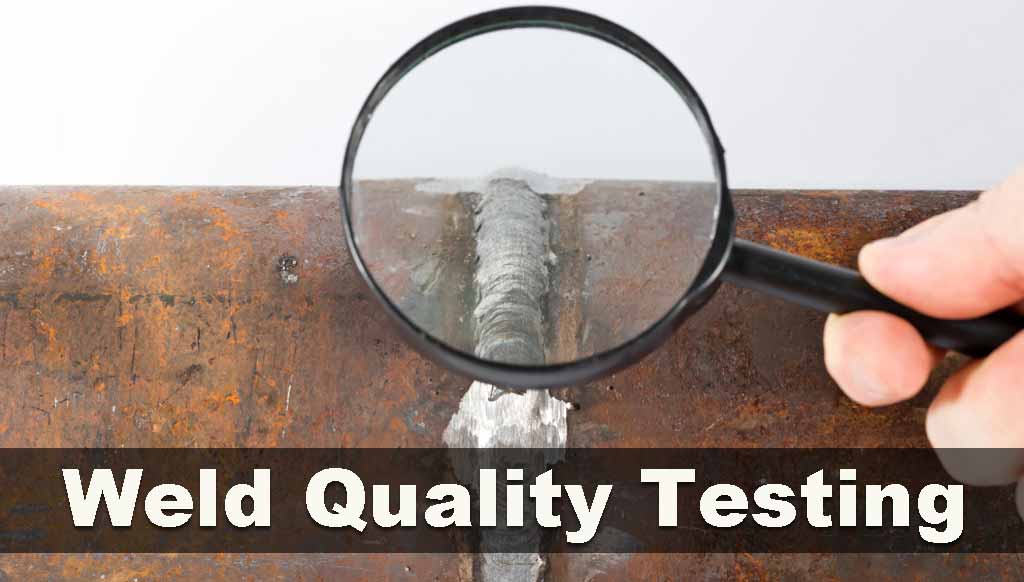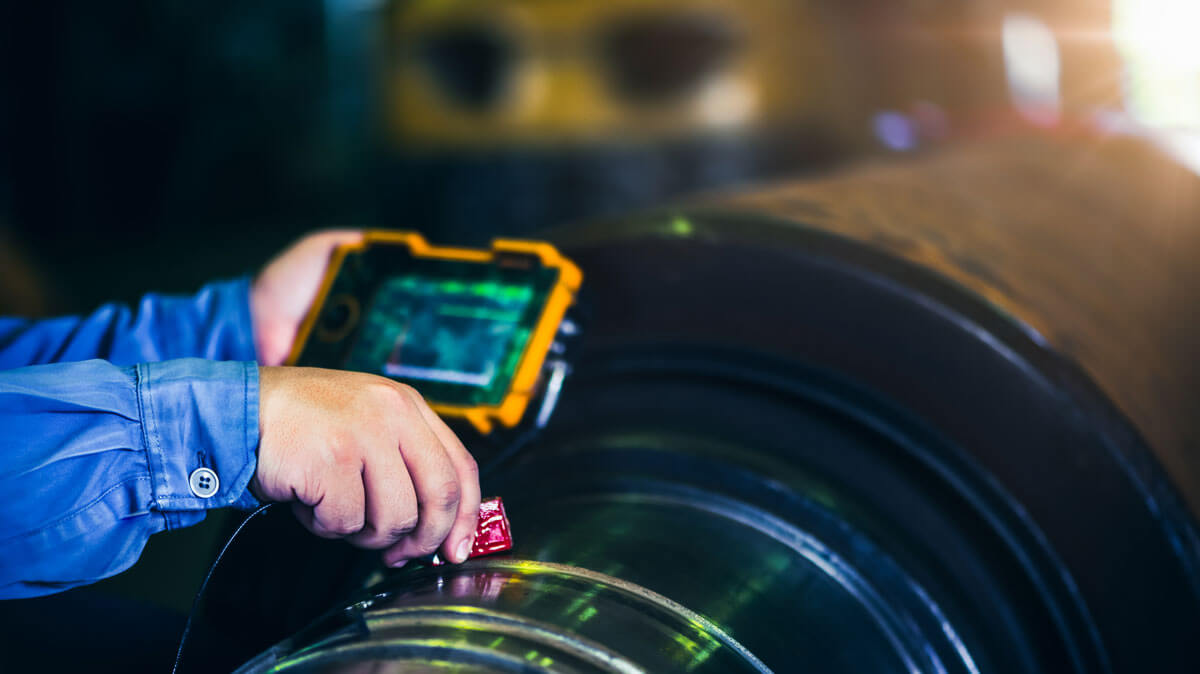Discover Advanced Welding Inspection Milwaukee Approaches for Accuracy
Discover Advanced Welding Inspection Milwaukee Approaches for Accuracy
Blog Article
An Extensive Checklist for Effective Welding Evaluation Practices
In the world of welding, the integrity of frameworks is vital, demanding a rigorous strategy to examination techniques. A thorough list offers as a crucial tool in making sure adherence to sector requirements, incorporating crucial pre-welding, in-process, and post-welding assessments. By methodically addressing material verification, weld high quality, and comprehensive documentation, organizations can considerably boost safety and performance. What particular aspects should be focused on in each phase to attain optimum outcomes? Checking out these important elements can produce insights that profoundly effect welding operations.
Understanding Welding Specifications
Welding requirements play a crucial duty in making certain the top quality and safety of welded components and frameworks. These requirements establish the standards for materials, procedures, testing, and evaluation, thus offering a framework for constant top quality guarantee in welding processes. Numerous organizations, consisting of the American Welding Culture (AWS), the International Organization for Standardization (ISO), and the American Society of Mechanical Designers (ASME), have developed extensive criteria that control various elements of welding.
Understanding welding standards is essential for specialists in the area, as adherence to these guidelines decreases the risk of defects and failings in welded joints. These criteria cover details demands for weld top quality, including appropriate resistances, the sort of welding techniques to be used, and the qualifications required for inspectors and welders.

Pre-Welding Evaluation Steps
Before any welding procedure begins, an extensive pre-welding evaluation is necessary to recognize possible issues that might jeopardize the high quality of the weld. This preliminary action works as an important structure for making certain conformity with applicable welding codes and requirements.
The very first action in the pre-welding assessment is to validate the products being used. This consists of checking for the right kind and grade of steels as specified in the task paperwork. Next, it is crucial to inspect the fit-up of the parts to make certain correct placement and joint setup. Imbalance can result in insufficient penetration and structural weak points.
Furthermore, examining the cleanliness of the surfaces is crucial; contaminants such as oil, paint, or corrosion can negatively affect the quality of the weld. Following this, a complete analysis of the welding devices need to be performed, ensuring that it is adjusted and in great working problem.
Lastly, assessing the qualifications of the welding employees is important. Welders need to possess the essential qualifications and experience to execute the specific welds needed for the job. By sticking to these pre-welding evaluation steps, the probability of flaws and failures in the final weld can be dramatically lowered.

In-Process Examination Techniques
In-process evaluation strategies play a vital role in making certain the honesty and high quality of welds as they are being carried out. These techniques permit inspectors to determine defects or discrepancies from requirements in actual time, thereby stopping expensive repair services and making sure adherence to layout demands.
One secret technique involves visual examination, where inspectors evaluate the weld grain for harmony, infiltration, and proper profile. This can be complemented by the use assesses to determine weld measurements, making sure compliance with predetermined tolerances. Furthermore, the execution of non-destructive testing (NDT) techniques, such as ultrasonic screening or magnetic particle screening, during the welding procedure can disclose subsurface defects that might not be noticeable on the surface.
An additional vital facet is keeping track of welding criteria, including voltage, amperage, and travel speed. Consistency see page in these specifications is essential for achieving optimal weld high quality. Documenting these specifications during the welding procedure provides a traceable document for future referral.
Training personnel in correct assessment methods and the usage of ideal devices boosts the performance of in-process inspections. By incorporating these techniques, companies can attain better welds, lower rework, and inevitably ensure the security and dependability of bonded frameworks.
Post-Welding Quality Checks
Complying with the completion of welding procedures, post-welding high quality checks are vital to verify that the welds satisfy all defined requirements and needs. These checks are crucial for making certain the integrity and durability of the bonded joints. The examination process normally begins with a visual evaluation, evaluating for surface area defects such as cracks, porosity, or insufficient fusion.
Ultimately, non-destructive testing (NDT) methods, such as ultrasonic screening, radiographic testing, or magnetic particle Get More Information testing, might be utilized to identify interior problems that are not visible to the naked eye. Each approach has its distinct advantages and is chosen based upon the weld's place, product kind, and the nature of the application.
Evaluating the mechanical buildings of the weld, including tensile toughness and ductility, can supply additional guarantee of performance under operational conditions. Overall, extensive post-welding evaluations are essential for preserving performance, security, and adherence to regulative and sector criteria.
Documents and Reporting
Just how can reliable documentation and reporting boost the welding inspection procedure? Precise documentation and detailed reporting are essential components that make certain the stability and top quality of welding procedures. Welding Inspection Milwaukee. They work as an official document of inspection findings, assisting in responsibility and traceability in conformity with industry criteria

A well-structured coverage system makes it possible for examiners to clearly connect any non-conformances, disparities, or locations requiring improvement. This openness cultivates an environment of continuous renovation, as stakeholders can easily assess previous performance and carry out restorative activities.
Moreover, reliable documents includes detailed documents such as welding treatment requirements (WPS), welder qualifications, and inspection lists. These elements supply a framework for evaluating weld top quality and adherence to established guidelines. In the occasion of conflicts or top quality issues, detailed documents works as a dependable referral, reducing uncertainty and securing all parties involved.
Finally, keeping organized records aids in training and certifying employees, making sure that industry best practices are upheld. Ultimately, careful documentation and reporting not just enhance the welding examination process however likewise add to the general safety and security and dependability of bonded structures.

Conclusion
In final thought, a Check Out Your URL comprehensive checklist for efficient welding inspection practices is important for making certain quality and safety and security in welded frameworks. Adherence to established welding requirements, thorough pre-welding inspections, rigorous in-process analyses, and comprehensive post-welding top quality checks collectively contribute to the stability of bonded joints.
Welding standards play an important function in making certain the top quality and safety of bonded components and frameworks. Numerous companies, consisting of the American Welding Society (AWS), the International Organization for Standardization (ISO), and the American Society of Mechanical Designers (ASME), have developed thorough requirements that govern various elements of welding.
Following the completion of welding procedures, post-welding quality checks are critical to verify that the welds satisfy all specified criteria and needs - Welding Inspection Milwaukee.In verdict, a thorough checklist for effective welding evaluation practices is vital for making sure top quality and safety and security in welded frameworks. Adherence to established welding criteria, thorough pre-welding inspections, extensive in-process assessments, and complete post-welding high quality checks collectively add to the honesty of bonded joints
Report this page